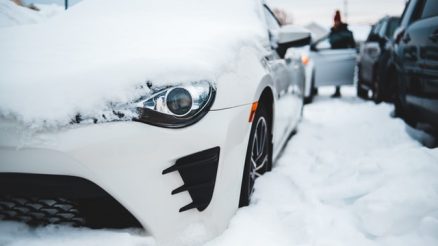Building your car might seem like something only serious hobbyists and professionals can do, but it’s pretty easy to do with the right tools and experience. While every vehicle you build will be unique to you, you can follow these step-by-step instructions as a guide on building your car from start to finish.
Table of Contents
What do you need?
You will need money, a little time, and patience to kickstart car building. All you need to build your car is a set of tools and some nuts, bolts, and assorted hardware- you will need a parts list. When assembling a vehicle, you require following directions specific to each make and model. You can buy most do-it-yourself car assembly kits at auto shop parts stores or online. In many cases, you will get step-by-step instructions with photos or illustrations that show you exactly how to do it.
Once you have all of your parts and tools ready, there are several ways that you can start building your car. One option is attending workshops or classes offered by many local auto schools or community colleges. Making your car seems like a daunting task. However, it may be easier than you think with detailed instructions.
Tools You Need For The Build
You will need many tools to get started with your first kit car. You should also research what you might need based on what kind of kit car you plan to build. Kit cars usually comprise regular parts such as fenders and rims, and then there are specialty items that you also need to order.
For example, if you want to build a VW Bug out of fiberglass, you will need fiberglass cutters to cut off excess fiberglass from pieces like a trunk lid or fender, so they fit perfectly on your VW Bug. You may also find it helpful to have an array of drill bits or rotary saw blades to work with different materials.
Identify Where To Buy Your Tools And Parts and Create Enough Space
Assembling your car requires purchasing certain parts from auto parts stores or getting them online from sites like eBay, Craigslist, etc. To do so, you will need some essential tools and supplies, like a set of wrenches, screwdrivers, and hammers. You should also have enough space to safely work with your vehicle without risking injury or damage to any other items around you. You will want your workspace clear of any clutter or obstructions so that you don’t accidentally trip over something or poke yourself with one of your tools.
Nuts and Bolts – Starting the Frame
When you build your car, you will start with one of two frames—steel or aluminum. Steel is heavier but more robust and less expensive than aluminum, so it’s a good choice for large vehicles. On the other hand, aluminum is lightweight and a good choice for mid-sized cars that need quick acceleration.
Bodywork and Interior
One of your first steps should be to gather all of your resources and figure out what you will need for your car. One question that most new builders ask is, Where do I start? The answer is bodywork and interior. Bodywork includes all of those things under your car’s skin, such as doors, hood, trunk lid, fenders, quarters, and rocker panels.
Interior parts include almost everything inside your car like seat frames, trunks, wiring harnesses, steering wheel, and horn button, to name a few. You can have someone else build these, or if you have some experience with metalwork, go ahead and dive in! And speaking of diving in, let’s move on to the next step.
The Engine
First, you will need a basic understanding of how a car works—that way, when you encounter unfamiliar parts, you will know which ones go where. You will also need basic carpentry skills and access to tools (including welding equipment). It helps to be mechanically inclined. And lastly, a background in physics can help when it comes to calculating fuel efficiency and engine performance.
Most cars are relatively simple to assemble and only require essential tools and hand tools such as screwdrivers, pliers, wrenches, etc. Most kits also come with a manual or DVD with illustrated directions. If you have ever assembled anything before (like furniture), you should have no trouble following along and building your new car! Step One: Find New or Used Parts Assembling your car requires purchasing certain parts from auto parts stores or getting them online from sites like eBay, Craigslist, etc.
Before anything else, you will need an engine for your car. While there are more than a few ways to make an engine, we suggest that you start with a single-cylinder engine (like those found in lawnmowers) rather than multiple cylinders (like those used in cars). The basic process is to use a high RPM motor with a continuously variable transmission to spin a crankshaft at low RPMs.
Steering, Suspension, and Front End
When it comes to building your car, steering is arguably one of the most critical elements. If you can’t correctly steer your vehicle, you won’t be able to move in a straight line. In other words, without a reliable steering system in place, you will probably end up losing control and crashing. Although many different automotive steering systems are available, only two core components are necessary for proper operation: tires and wheels.
Your car’s steering system comprises four essential components: a power steering pump, steering gearbox or rack, tie rods, and kingpins. When all these components work together to move your wheels in turn, they also help you control and steer your vehicle. A power steering pump is a hydraulic device that provides high-pressure fluid to various parts of a vehicle’s power-steering system.
It’s essential to understand how these parts work together and how they influence vehicle movement. If you want to learn more about tire suspension, wheel alignment, or related topics, you can contact D-Wells Automotive!
Drivetrain, Brakes, and Wheels
The drivetrain is one of many components that must work together to move your car. The function of a drivetrain or transmission is to transfer power from your engine to your wheels. A car’s drivetrain relies on various parts to provide optimal performance and safety when driving.
A car’s drive system is its lifeblood. The drive terrain comprises all of your car’s mechanical systems, including transmission, suspension, wheels and tires, braking system, differential, and drive axles. First-time builders should have a good understanding of how these individual components work before putting them together. You can break down drive terrain into two categories: driveline and vehicle dynamics.
Conclusion
Building your car needs dedication, resources, and even more patience. The ability to follow instructions keenly is a great virtue that will see you through to finishing a successful project. If you have time, resources, and motivation, grab the opportunity and start planning and sourcing the parts and tools you need. You can visit the D-Well Automotive site to learn even more, and they will keep you motivated as you work through your hobby!



